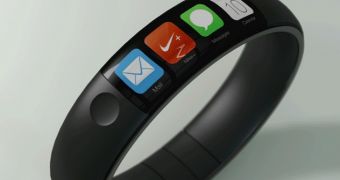Morgan Stanley apparently has its eye on Apple’s every move. The investment bank has compiled a list of the computer giant’s every acquisition, hiring, and announcements since mid-2012, and concludes that something big is about to go down this year.
In a report titled the “Internet of Things,” the multinational financial services corporation asks “is this the path to wearable Apple devices?”
Looking at the huge list of moves made by Apple in areas like health, fitness, sensors, chips that record movement, the reassignment of an outgoing executive to “special projects,” it’s hard not to make a correlation with the rumors about Apple’s iWatch.
The first such move recorded by Morgan Stanley is Apple’s acquisition of Authentec, the company that spawned the Touch ID fingerprint sensor in the iPhone 5s. The solution could well put a padlock on the iWatch perhaps with even more success.
In late 2012-early 2013, Apple is said to have hired several blood monitoring sensor experts from the now defunct C8 MediSensors. In February 2013, a report from Bloomberg said Apple had assembled a team of 100 product designers to work on a “wristwatch-like device.” Other media reports then came to say that the company was experimenting with curved glass designs.
Yet, more reports later said that Apple was working hard to include smartphone functionality in the smartwatch. A new acquisition was later reported: WifiSLAM, a company that develops indoor location services.
In March 2013, Apple confirmed that Kevin Lynch joined the company as a technology expert reporting to Bob Mansfield, SVP of Technologies.
Mansfield was about to step down from his position later that year, though something made him change his mind. Reports said it was a big fat check from Apple. In any case, he stayed on board and was given some “special projects” to work on side by side with Paul Deneve, another recent hire.
Later in August 2013 the Cupertino giant began recruiting biometric specialists, sensor experts, and a guy named Ben Shaffer who worked on the Nike Fuelband (which might provide some indication as to what the iWatch itself will look like).
After announcing the iPhone 5s with its interesting M7 motion chip – which many believe will also end up in the iWatch – Apple continued its hiring spree through February 2014. One key figure recently added to the mix is said to be Ravi Narasimhan, who holds over 40 patents on medical sensors, including on respiratory measurements.
Another is Nancy Dougherty, who came from Sano, a startup working on monitoring blood chemistry using micro-needles.

 14 DAY TRIAL //
14 DAY TRIAL //